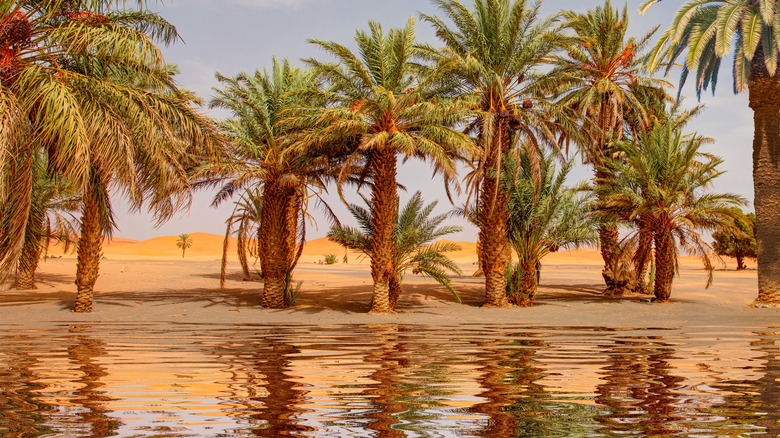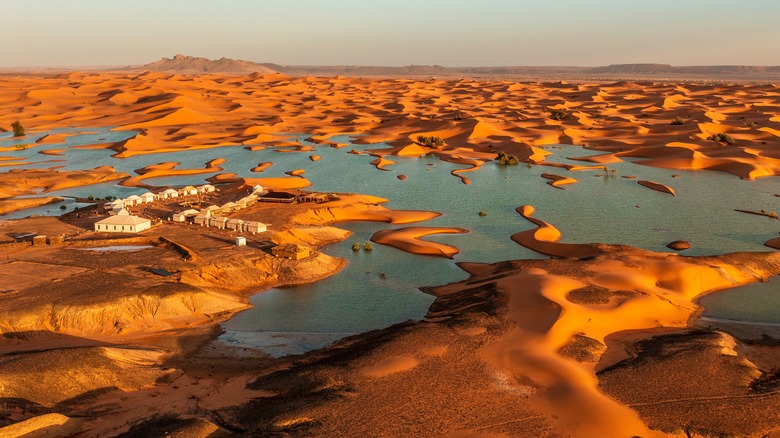Here's How Often The Sahara Floods (And Why It Isn't Always A Good Thing)
Subtropical deserts are known for their sandy landscapes, especially the Sahara Desert. And, although these are some of the hottest places on the planet, it rains in deserts. In fact, the average yearly rainfall in the Sahara Desert is 0.5 millimeters. While this barren, arid landscape doesn't get rain some years, it gets too much rain other years that leads to flooding.
In September 2024, the northwest portion of the Sahara experienced flooding when an extratropical cyclone passed through. The extreme weather dumped an estimated 200 millimeters of rain on the area, which was more than the area had received in such a short time span in three to five decades. It might not seem like much, considering that states in the United States get up to 71 inches of rain per year (per Statista). However, getting nearly 8 inches of rain over just a couple days makes a big impact when the norm is 0.5 millimeters (or none) for an entire year.
NASA captured the floodwater and runoff that filled typically dry lakes on its Terra satellite. However, this downpour across northwest Algeria, Libya, southeast Morocco, and Tunisia doesn't happen often. Researchers analyzed weather events across the area during two decades between 2000 and 2021 and found only six that led to flooding and the usually dry lakes filling.
Why the Sahara Desert flooding isn't always good
You might only know of the Sahara as one of the driest places on Earth, so seeing lakes and rivers through it is shocking. However, this desert area hasn't always been dry. Natural resources of the Sahara Desert included grasslands and forests full of trees around 8,000 years ago (during an African Humid Period), and it was referred to as the Green Sahara. Its transformation into a desert was brought on by Earth's orbit changing. With a cycle of humid and dry periods in the Sahara, the current desert phase is estimated to last another 15,000 years.
In the meantime, research published in Nature Communications based on the devastating floods of Derna, Libya, in September 2023 suggests that flooding is the biggest threat for deserts. It also sheds light on the rising frequency of related weather events as a result of climate change. Leipzig University climate researcher Karsten Haustein told CNN that climate change may be one reason why the summer wet zone in the Sahara has shifted farther north than usual. Based on models, "the Intertropical Convergence Zone, which is the reason for (Africa's) greening, moves farther north the warmer the world gets," he said.
On top of that, a study published in Nature Climate Change predicts that extreme weather conditions will continue to move northward as carbon dioxide levels from fossil fuel pollution rise and Earth gets warmer. More research is necessary to determine just how much climate change has influenced recent flooding across dry lands, but the increased frequency could signal future devastation.

